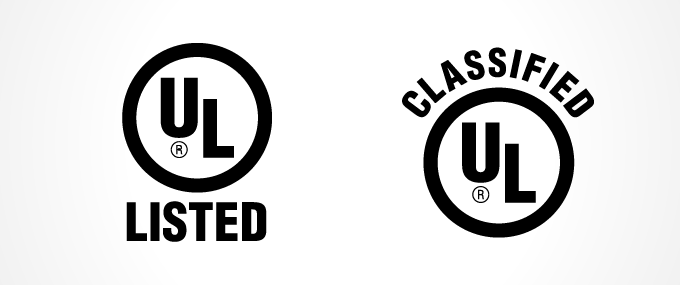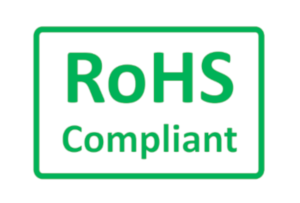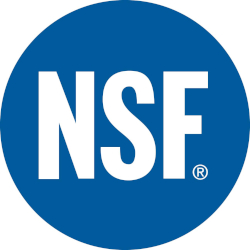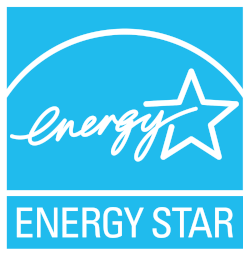In the US, kitchen appliances do not have a legal obligation to meet health or safety requirements. Therefore, how can we make sure that an appliance such as coffee maker is safe to use? We receive many questions about the quality and safety of coffee makers and other small kitchen appliances. Therefore, we decided to dedicate this article to safety certifications, licenses, standards and requirements. All of them developed to ensure that coffee makers we buy are safe to use.
This post contains references to products. We may receive compensation when you click on links to those products, at NO charge to you. Please visit this page for our Affiliate Policy.
New manufacturers and problems with safety and health standards
Commitment to safety and quality used to be of utmost importance to many manufacturers. American manufacturers set and follow very strict guidelines to ensure safety of coffee makers and other kitchen appliances.
For instance, Cuisinart, KitchenAid, Hamilton Beach, Black and Decker or Crock Pot test their products for compliance with laws and regulations. They do it even if certain certifications are not legally required.
However, online shopping allowed unknown (or obscure) manufacturers to enter the market more easily. A large proportion of these new manufacturers appear to cut corners on safety, health and quality. Their products lack health and safety certifications.
In addition, online shopping marked a shift in consumer behavior. With many options available at hand, consumers appear to shift from the best quality to the best price (though, the price can be misleading, too). The new manufacturers utilized that need: they manufacture cheap(er) products, which do not undergo safety or health certifications.
Safety and health certifications matter
What does a safety certification mean for a coffee maker?
Safety certification guarantees that a relevant agency tested a coffee maker for compliance with a pre-defined set of standards, and a coffee maker has passed specific health and safety requirements.
Verifying that a coffee maker or another kitchen appliance is certified can be done in different ways:
- Manufacturer’s official website (if they have the certification, they will surely talk about it)
- Product’s user manual (look for the part that talks about health and safety)
- Product itself (certified products might have a sticker or mark that attests to the certification)
- UL Prospector website
- Reach out to us! Here, at Owly Choice, we’ll be happy to verify this information for you
They ensure compliance with pre-defined set of requirements, but…
Does a safety or health certification of a coffee maker imply that an appliance is absolutely safe? Not necessarily. A safety or health certification means that a coffee maker has fulfilled a certain pre-defined set of standards. There might be additional health or safety considerations, which were out of scope for a license.
K-cups, for instance, have met all necessary safety and health requirements, including BPA-free certification.
However, the use of K-cups has been surrounded by controversy, with many people claiming that coffee pods release other non-BPA types of chemicals and toxins in the coffee. None of the existing health certifications checks for BPHP, BPS, or other chemicals, which allegedly contribute to health problems.
Nonetheless, a certification considerably reduces safety or health risks. In addition, a certification affords us some legal protection.
Definitive Guide: relevant health and safety standards for coffee makers and other appliances
We, at Owly Choice, consider appliance safety to be utmost importance, and encourage our readers to take it into account in their purchasing decisions.
Coffee makers that are certified by appropriate agencies meet at least the minimum standards for health and safety. That is better than nothing.
To make this a little bit easier for our readers, we will examine some of the most important certifications, licenses and agencies that thoroughly investigate appliances and issue proper certifications.
Coffee makers that come with such certifications come with a guarantee of meeting some basic safety and health standards.
→ UL listing and classified: safety requirements in the US
UL stands for Underwriters Laboratories, a mark that we can find on products in many different industries, including consumer products, materials, chemicals, retail, technology and electronics. In the US, American Standards Institute (ANSI) accredits UL certifications.

What does the UL mark mean for a consumer?
The UL mark means that the product has successfully passed UL requirements. What are those requirements? The UL website says to “support the production and use of products which are physically and environmentally safe” in an effort “to prevent or reduce loss of life and property.”
In practice, UL is among the most common and comprehensive tests for consumer products. UL ensures that a line of appliances does not come with major flaws that could harm users.
The main objective of Underwriters Laboratories is to develop standards that advance safety and performance for consumers.
Is this certification required?
Surprisingly, the appliances and consumer products in the US market do NOT require UL certifications. For instance, a coffee maker does not need to be tested for health or safety, as specified by the UL requirements.
Consequently, there are many new manufacturers that do not send their products for UL testing. These products can potentially be harmful to users.
Despite not being a requirement, many reputable manufacturers and companies use or produce appliances and equipment that meets UL requirements.
Difference between UL listed and UL certified
There is a difference between being UL-certified and UL-listed. UL certification applies mostly to parts and components. UL listing implies that an entire product, with its parts and components, has been found to comply with safety regulations.
→ ULC listed and certified: safety requirements in Canada

ULC stands for Underwriters Laboratories Canada. It offers the same type of certification as UL, but for products available in Canada.
The ULC mark means that an appliance has successfully passed a certain set of safety requirements for the Canadian market.
Although UL certifications can be used in both the US and Canada, ULC certifications are only used for products meant for the Canadian market.
→ CE (Conformité Européene) certification: safety and health requirements for EEA products
The CE mark on a product guarantees that an appliance has passed necessary health, safety and environmental requirements to be sold on the European Economic Area (EEA) market.

The CE certification is mandatory for products sold in the EEA
Products available in the EEA need to undergo CE testing and certification. This includes appliances manufactured or designed in the EEA and outside of the EEA.
The CE mark should be visible on either the product itself or the packaging. Alternatively, the CE mark needs to be available within the information that comes with the product.
Anyone who suspects that the CE mark has been misused has the right to ask the manufacturer for a certificate of conformity or a declaration of performance.
Difference between UL certification and CE certification
There are profound differences between the UL certification and the CE certification:
- The CE has far stricter and more comprehensive requirements than UL. Products and appliances need to go through more tests. Therefore, they may have much better safety records.
- UL certifications attest that the health and safety standards developed by Underwriters Laboratories have been followed, while the CE mark states that the commonly recognised EEA health, safety and environmental regulations have been followed.
- CE is mandatory, while UL is not
- UL certifications are given to US and (ULC to Canadian products), while the CE certification is for products sold in the European Economic Area.
→ RoHS (Restriction of Hazardous Substances) certification and requirements
The RoHS directive is a set of criteria formulated by the European Union back in 2002.
The directive tries to regulate the use of toxic materials in electrical and electronic devices, systems and toys, with the purpose of making electronics manufacturing safer at every stage of an electronic device’s life cycle.

Ever since 2006, all applicable products in the EU market have had to comply to the RoHS directive. EU RoHS specifies maximum levels for 10 restricted substances:
- Cadmium (Cd)
- Lead (Pb)
- Mercury (Hg)
- Hexavalent Chromium: (Cr VI)
- Polybrominated Biphenyls (PBB)
- Polybrominated Diphenyl Ethers (PBDE)
- Bis(2-Ethylhexyl) phthalate (DEHP)
- Benzyl butyl phthalate (BBP)
- Dibutyl phthalate (DBP)
- Diisobutyl phthalate (DIBP)
Some versions of the RoHS directive have also been implemented in California, China, Japan, Taiwan, Korea, Norway, India, Ukraine, Singapore, UAE, Turkey, the Eurasian Economic Union and Brazil.
→ WEEE (Waste Electrical and Electronic Equipment) certification and requirements
The WEEE Directive is a European Community Directive that applies to all the electronic equipment that is manufactured, sold or imported in an EU country.
The main goal of the WEEE certification is that electronic appliances, including coffee makers, are disposed of in an environmentally friendly manner. Thus, the WEEE regulation attempts to minimize the footprint of electronic appliances on the environment.
More specifically, the WEEE directive states that producers, sellers and importers of electrical and electronic products are financially responsible for all the environmental impacts their products have on the market.

To comply with the directive, all electronic equipment have to be registered before market launch, and sold quantities must be reported regularly. Producers, sellers and importers have to make sure that electronic products are disposed of in an environmentally friendly way, in order to comply to the WEEE Directive.
→ CSA certifcation and requirements
The CSA Group offers product testing and certification in a similar way in which the Underwriters Laboratory (UL) does.
The difference between CSA and UL is as follows:
- CSA offers certifications recognized internationally
- UL (and ULC) offer certifications recognized in the US and Canada only.

CSA works with international companies like the International Organisation for Standardization (IOS) and the International Electrotechnical Commission (IEC).
→ FDA certifications and requirements
The Food and Drug Administration (FDA) needs to certify any product that consumers can swallow or put on skin. Further, FDA needs to test and certify anything that can create changes in the surrounding atmosphere via electromagnetic waves.
Such products can present a risk of injury or illness through direct interaction with human bodies.
Examples of products that need a check mark from the FDA include but are not limited to:
- foods,
- beverages,
- supplements,
- drugs,
- cosmetics
- medical devices,
- radiation emitting devices.
FDA certification is mandatory in the US.
Furthermore, the FDA certification is required when companies want to export specific products from the US. In those circumstances, the FDA certification will contain information about a product’s regulatory or marketing status.
→ NSF (National Sanitation Foundation) certification and requirements
The National Sanitation Foundation was founded in 1944 in Ann Arbor, Michigan. It is an independent organization that offers services in over 170 countries worldwide.
Products that carry the NSA mark have passed public health standards. Some small appliances like coffee makers and slow cookers might have the NSF mark.

The NSF certification is not mandatory. However, a manufacturer needs to gain the NSF certification for specific health-related claims.
Therefore, the foundation carries chemistry, microbiology, toxicology and environmental tests before certifying a certain product.
→ Energy Star certification and requirements
The Energy Star mark means that an appliance is energy efficient. Consequently, this implies that a product should save money by utilizing energy efficiently.
The Energy Star label might be one of the most popular labels. Products with the label meet or surpass the energy efficiency requirement set by the US EPA and US department of Energy.

What do we recommend?
Here you have them! Some of the most widely used marks that we should look for when we want to make sure that our products have been tested and are compliant to the health and safety norms in vigor.
What is your favorite way to grind coffee without a coffee grinder? Have you tried any of the methods above? Which alternative way to coffee grinding yields the finest and best grind size?
Please leave us a comment, share with your friends!

Leave A Comment